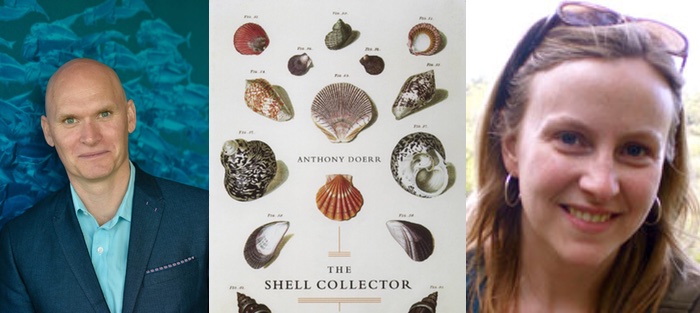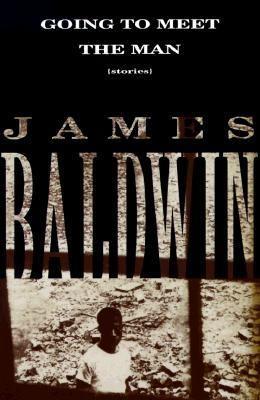Most anyone who has been in an introductory creative writing course has heard of Freytag’s pyramid, the visual representation of the notion that every story steadily rises from conflict to climax, then drops off into resolution. And I’m certainly not going to argue the principle, which has two draws: its scientific sounding name and its basic generality that allows nearly every story to fit the model. And honestly, it’s a dramatic structure most beginning writers need to learn; many of us start by writing stories in which nothing happens to nobody until somebody dies in the end. But in ignoring the specific moves many stories make during their long middle rising action, Freytag’s pyramid short-changes the range of structural variations that can occur within a story—variations that add conflict and complications to many of the best short stories—not to mention allowing those stories to represent a greater range of human behaviors. What follows are two such structures.
I Wish
It’s a well-known dictum of Disney that their animated movie musicals must start with an “I Wish” song in which the protagonist declares their deepest desire, the one that will be fulfilled by the end of the movie. This is classic fairy tale stuff, of course; and most short story writers follow a similar dictum: what does your character want and what obstacles are in the way of what they want? According to Freytag’s pyramid, initial exposition explains the character’s desire, rising action demonstrates the obstacles, and the crisis or climax allows for the final fulfillment of that desire (or not). In other words, the rising action of the middle is devoted to preventing the character from achieving his or her desire. But some stories follow a different fairy tale structure. The one that says be careful what you wish for, you might actually get it.
Think of Joyce Carol Oates’s classic “Where Are You Going, Where Have You Been?” In a toss-off moment at the start of the story, the teenage protagonist, Connie, “wished her mother was dead and she herself was dead and it was all over.” It is a small moment of generalized exposition, so teenagerish as to be clichéd, except that by the end of the story Connie will choose to go with the obviously dangerous Arnold Friend because she believes this will prevent the death of her mother and the rest of her family. That moment, in which Connie expressed a wish she didn’t really mean, is the seed for an extraordinary story, in which Connie must decide what to do when her (surely forgotten) wish risks coming true. Connie’s other unspoken wish, for a more exciting and independent life, has also, in a twisted way, come true—and the change in Connie, from a girl who resents her family to one who will sacrifice herself in order to protect them, is achieved not by putting obstacles in her path, but by clearing the way.
In his story “The Hunter’s Wife,” Anthony Doerr fulfills a whole series of wishes expressed by his two main characters, a hunter and the magician’s assistant who becomes the hunter’s wife. And in each case, the fulfillment of a wish complicates the story. In a variation on a protagonist-antagonist conflict, in which two characters have opposite goals, the two characters, who seem to want the same thing (to be together) end up with wishes that when granted are ultimately, unexpectedly at odds with each other.
 The hunter first sees the magician’s assistant in the midst of a performance. She is being sawed in half, and he wants to know her. He follows her from performance to performance, pleading, “Just eat dinner with me … Just tell me your name.” Finally she grants him that wish. They eat rhubarb pie. Her name is Mary Roberts. And she tells him her own wish: “I dream bigger dreams,” she says. “I’m not going to get sawed in half by Tony Vespucci all my life.” For two years they meet only when her magic act returns to Montana, but when the hunter finally takes her to his cabin, a sacred place for him, the reader gets the first inkling that her wish—bigger dreams—is to be granted in quite a literal way (this, too, is a trick common to fairy tales). The hunter takes her to see a hibernating grizzly, and she wants to touch it. Naturally the hunter tries to dissuade her, but she “lowered her face, as if drinking from the snowy hollow, and pressed her lips to the bear’s chest.” Into her mind pours the bear’s dreams: “Summer…Blackberries. Trout. Dredging his flanks across river pebbles.” And though the granting of the hunter’s wish (for them to be joined) has allowed the granting of his to-be-wife’s wish (bigger dreams), her wish has now complicated his. For “[t]hree years he had dreamed this girl by his fire. But somehow it had ended up different from what he had imagined.” It “felt different, as if he had no choices to make….”
The hunter first sees the magician’s assistant in the midst of a performance. She is being sawed in half, and he wants to know her. He follows her from performance to performance, pleading, “Just eat dinner with me … Just tell me your name.” Finally she grants him that wish. They eat rhubarb pie. Her name is Mary Roberts. And she tells him her own wish: “I dream bigger dreams,” she says. “I’m not going to get sawed in half by Tony Vespucci all my life.” For two years they meet only when her magic act returns to Montana, but when the hunter finally takes her to his cabin, a sacred place for him, the reader gets the first inkling that her wish—bigger dreams—is to be granted in quite a literal way (this, too, is a trick common to fairy tales). The hunter takes her to see a hibernating grizzly, and she wants to touch it. Naturally the hunter tries to dissuade her, but she “lowered her face, as if drinking from the snowy hollow, and pressed her lips to the bear’s chest.” Into her mind pours the bear’s dreams: “Summer…Blackberries. Trout. Dredging his flanks across river pebbles.” And though the granting of the hunter’s wish (for them to be joined) has allowed the granting of his to-be-wife’s wish (bigger dreams), her wish has now complicated his. For “[t]hree years he had dreamed this girl by his fire. But somehow it had ended up different from what he had imagined.” It “felt different, as if he had no choices to make….”
As would any fairy tale figure, he tries to solve his problems by making another wish. “Stay with me,” the hunter says to her, “Stay the winter.” But when this wish is granted and she stays, her bigger dreams are also brought closer. She touches a dead heron and learns she can see where the heron went at the moment of death. She touches a hive of bees and sees all of their dreams at once; and she sees, too, the hunter’s dreams—though he does not believe her and she is hurt. Everybody is getting what they wished for, and yet this introduces more conflict between them.
When they marry, the hunter’s desire is fulfilled: he has got the girl, she will stay. And so he expresses no new desires. But instead of residing in happily ever after, his wife becomes “bored and lonely.” She longs “for the stillness of winter.” And yet when winter comes, it is incredibly severe. With every fulfilled wish, the drama of the story is elevated. Their truck is buried, coyotes claw at their house for food, which they themselves are running out of, and everywhere the hunter looks “something was dying ungracefully.”
It is during this time that the hunter’s wife’s bigger dreams come yet closer:
[S]he hardly ate, sleeping eighteen, twenty hours a day. When she woke it was to scribble on notebook paper before plummeting back into sleep … With her stomach empty and her body quieted, without the daily demands of living, she felt she was making important discoveries.
The hunter, though, cannot understand, and he “hated himself for bringing her there.” When he goes out in an attempt to get them food, he is nearly killed.
In the end, they survive the winter and in the culmination of her bigger dreams, the hunter’s wife touches the ankle of a man killed in a car accident and not only does she have a vision of his dying thoughts, but all who touch her do as well. People talk, and the hunter hears of it, and he accuses her of tricks. Again the fulfillment of her wishes brings conflict to their story. She becomes a phenomenon—people hire her to touch the dead or dying. And she begins to think of leaving him. For the hunter, “everything, it seemed, was out of his hands.” Her wishes again cannot coexist with his. Her own unspoken wish, for him to believe her, remains unfulfilled even when she holds his hand to a dying deer and a vision (“Fifty deer wading a sparkling brook”) enters his mind. “Don’t come near me…Don’t touch me,” he tells her, and so eventually she leaves. Again he has gotten his wish.
It is not until twenty years later that they reunite. He writes her a letter and she invites him to an event where she is to touch the bodies of a university president’s wife and two daughters, killed in an accident. While the hunter watches, she tells the president to “think hard about something you would like resolved, some matter, gone now, which you wish you could take back—perhaps with your daughters, a moment, a lost feeling, a desperate wish.” In response, the hunter thinks of the moment when his wife forced him to touch the deer and he turned away from her. The wife continues speaking to the president: “Think now … of some wonderful moment….” And as all the people in the room—it is a large reception—join hands, the hunter feels “a strange warmth, a flitting presence … She was inside him now,” and he and all the others joined by their hands have a beautiful vision of the chancellor with his family.
Soon after, he leaves the reception hall and steps outside where his wife finds him. He wants to speak in that moment, to tell her she was right, but “he was afraid to speak. He could see that speaking would be like dashing some very fragile bond to pieces… so instead they stood together … and he reached, finally, to take her hand.” The hunter believes her now. She gets her last wish, and they achieve a moment of resolution precisely because he does not fulfill his own wish—he does not speak—he has learned to be wary of his own desires.
While this story clearly follows Freytag’s general structure of characters facing rising obstacles until they reach a resolution, it is not a story about delaying the fulfillment of desire. Instead it demonstrates how the fulfillment of desire can generate just as much conflict as denial can, and in fact can generate more surprising developments in a story.
CONflict or ConFLICT
In The Art of Fiction, John Gardner suggests that there is a greater dramatic impact in having a character get herself into trouble than in having trouble land upon her, especially if she gets herself into trouble for good reason. This is certainly the case in the I Wish scenario of “The Hunter’s Wife.” These characters want love and connection; their desires are ones most readers share, and so the troubles they encounter as a result are all the more poignant and the reader is all the more sympathetic. As is the case with the wife in “The Hunter’s Wife,” sometimes characters are faced with choices that are neither good nor bad but both. And so instead of a character who is engaged in conflict, you get a character who is conflicted. And instead of a reader engaged by conflict, you get a reader who is engaged by feeling conflicted. This, too, is a variation on Freytag’s pyramid. There is no series of obstacles in the path of a character’s desire; instead there is a pro-con list of possible consequences.
In her short story “The Sleep,” Caitlin Horrocks invents a small town that decides to hibernate during their long and arduous winters. And what at first seems like an absurd choice begins to seem rational, though never ideal, as each of the positive and negative consequences of the act are examined by the story.
The initial idea comes from Albert Rasmussen who invites the townspeople to his house in the midst of the year’s first snow. “Human hibernation” he announces from amidst a “nest of mattresses and bedding.” The town, Bounty, is so small that it no longer has its own high school, so small that most of its inhabitants fit in Albert’s living room. Albert had been the bright light meant for bigger things:
He was the senior everyone called “college material” until he decided to stay, and then we called him “ours.” Our Albert and his girl Jeannie, who were confident that everything they could want in the world was right here in Bounty. We went to their wedding, the Saturday after graduation, and then stood by, helpless, when Albert’s parents lost the farm three years later. Maybe the family should have gotten out then, moved away and never looked back. Al might have found a job that paid better than fence repair and Jeannie might not have been killed by Reggie Lapham, seventeen years old and driving drunk on Highway 51 eight months before Al’s November invitation. Al might never have struck on hibernation, and we might all have gone along the way we’d been going, for better or worse.
And this is what the story shows us: for better and for worse.
First, the pros and cons are discussed as hypotheticals. Albert argues that winter is nothing but hardship and struggle, and the others raise all the logical questions: what about Christmas, what about school, what about work. But Albert has made up his mind, and his family hibernates for January and February, a test run, and the pros and cons become literal.
In March, the family wakes and “Al looked rested for the first time since Jeannie’s death…his body looked more like that of the man most of us had known for years, but his eyes looked like a stranger’s. No one could place the expression, except those of us whose children or grandchildren had left Bounty, gone off for college or work. When the children came back, we said, their eyes looked like that, like departure. Imagine, we thought: Albert had found that look in his sleep.”
When Albert asks the town what he missed, the report includes a blizzard, three deaths, and half the townspeople out of work. Al, on the other hand, reports, “’I had these long dreams…unfolding over days…I dreamed I was in Eden, but it was mine…I picked pineapples every day.’”
The next winter more families hibernate. Children sleep through their awkward phases, adults lose weight, families save money on heating and food. But, sales are down all winter, jobs are lost, and so more inhabitants of the town sleep, and so sales go down further, and more jobs are lost, and even more inhabitants of the town sleep…each action yields more pros and cons. The story’s rising action comes not from heightened conflict or obstacles, but from the growing uncertainty of what really is the right thing to do. The third winter a family dies of carbon monoxide poisoning while hibernating (con). One family’s space heater burns down their house (con), though they stumble out alive. Al, half-asleep, takes them into his own home (pro), and come spring begins a new business: assembling new heating systems for hibernating home-owners (pro).
The next fall, Reggie Lapham, the boy who killed Al’s wife while driving drunk, comes home from juvenile detention. His mother says, “‘He’s looking forward to the sleep…I don’t think he would have come back if he had to…’” and then trails off. The whole Lapham family goes to bed immediately after Thanksgiving. So, too, does Al’s family. And then others, realizing they can save money on Christmas presents, that they can avoid the whole downer holiday season, go to bed earlier as well.
The next spring a townsperson calls in to a radio show and asks if “sleeping through four months of strife was sanity or just denial.” Townspeople increasingly feel conflicted; they know “the Laphams and Rasmussens weren’t sleeping for the healthiest reasons” and that “if Al and Reggie needed help, we weren’t giving it to them because sleeping was easier for us too.”
But then Al builds a communal hibernation home out on a farm, with “people to share shifts taking care of animals” so everyone “could get some sleep.” More families join forces, the Simmonses, whose house burnt down, rebuild, and, with Al’s permission, invite the Laphams to hibernate with them, since they know what it feels like “to be given shelter when nothing but cold [is] around you.”
By the fourth winter the only townspeople staying awake are the librarian (who views the hibernation as being “like Narnia under the White Witch” and the antique shop owner. The town decides to sleep until Easter, their longest hibernation yet. And it is on Easter that, for the first time since the accident, the Rasmussens and Laphams stand in church together, not embracing, but there. While Al’s kids might be missing out on basketball season and Christmas presents, they get to see their father face Reggie Lapham with a measure of peace.
Finally news vans arrive—a national retailer has noticed that its winter-quarter sales in Bounty are down 95 percent—and the outside world passes judgment. The news announcers call the hibernation “horrible,” “horrifying,” “another product of the recession,” “a new economic indicator.” Suddenly readers see the town through outside eyes: “potholes…tumbledown barns…cracked sidewalks and collapsing houses…the flat roof of the high school …caved in under last year’s snow.” But readers also remember that the high school is no longer in use because Bounty no longer has enough kids to justify the school’s existence.
On the tenth year of the sleep a documentary is released. Al’s son Bobby is interviewed. Now a freshman at the state university, he says “’I’m not sure where I’ll go for Christmas break…I haven’t had a Christmas in years.’” But other Bounty kids have gone to college and come home again; they take over the antique store; they have babies; they don’t leave. Reggie Lapham marries a local girl.
And while the historians in the documentary lament Bounty’s lack of “immigrant spirit,” the lack of “desire to press on and out to something better,” readers can see that Bounty is showing more signs of life than it did in the time before the sleep. A local congressman defends the town, the immigrant spirit might have pushed the townspeople out of state, instead “they found a way to stay.” And when Al’s daughter Dee is interviewed, she expresses no regret. On camera, she “looked baffled, not able to find words sufficient to explain half her life, the happier more perfect half,” the half in which she is asleep. The first person plural voice of the story says, “We’re better neighbors in warm beds than we ever were awake.”
And so the reader can see, the conflict is not resolved. The town has decided on its course of action, and its point of view (they believe they are better and happier asleep than awake), but the reader will not likely reach the same conclusion. The reader can’t help but see that there is an air of tragedy to a life in which the better half is the one of dreams, and in which the best neighbors are those in their beds.
It is not just that the story presents characters in conflict—it leaves the reader in conflict. There is no crisis-climax to the story, there is only compromise, a choice that is half-good, half-bad. And so while there is resolution to the plot (the town will continue to hibernate) there is a lack of resolution to the story. The sense of conflictedness that many readers will be left with makes the story all the more haunting. There is no antagonist to be defeated, there are only the complicated choices of real life.
Freytag’s pyramid reminds us that stories must rise, and somehow they must come to their big finish, but writers must also remember that there is much more to be accomplished along the way, and that we must allow for complications in that long climbing middle.








